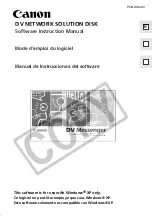48
The Parameters
LXP Native
|
Reverb Bundle
9
49
LXP Native
|
Reverb Bundle
The Parameters
9
Mix (Wet Dry Mix)
Mix is the proportion of wet (processed) signal to dry (unprocessed) signal. This
must be used with care. If the plug-in is used as an insert on a single track, then
it is probably appropriate to use the mix control directly in the plug-in. However,
reverbs are often used on Aux tracks and may be sourced over internal busses in
the DAW. In this case, it may be better to control the level on the Aux track rather
than wet/dry mix. Not all DAWs feature delay compensation, so it’s important
not to have a dry signal in more than one path (cancellation being a possible
outcome).
The mix parameter is “sticky.“ Like other parameters, it is saved and restored
by the DAW. But after the plug-in is loaded, the mix value will not change—
even if you load another preset in the same plug-in. This makes it easier to
preview presets.
Predelay
This is used to add a small amount of delay to a signal before it enters the
reverberator. This is used to create a little separation between the wet and dry
signals, in turn creating greater clarity in the mix.
Reflection Parameters
Rfl Dly
Controls the delay time of a reflection. Note that this parameter can have
different routing configurations, indicated in its name. For example, if its
name appears as “L Rfl Delay” or “L-L Rfl Delay,” the signal comes in from the
left and goes out the left. If the name appears as “L-R Rfl Delay,” the signal
comes in from the left and goes out the right.
Rfl Gain
Controls the gain of a reflection. The sign of the gain coefficient may be
optionally inverted. Note that this parameter can have different routing
configurations, indicated in its name. For example, if its name appears as “L
Rfl Gain” or “L-L Rfl Gain,” the signal comes in from the left and goes out the
left. If the name appears as “L-R Rfl Gain,” the signal comes in from the left
and goes out the right.
Rfl Time Mast
This parameter is used to scale all reflection times at once.


















